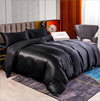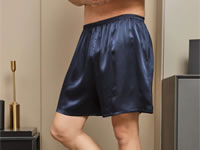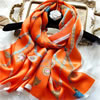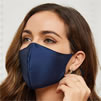Silk: The Ultimate Breathable Fabric for Comfort in Any Season
Share
Table of Contents
In the realm of fabrics, breathability is king. Whether it's sweltering summer days or brisk winter evenings, the ability of a fabric to allow air to flow freely can make all the difference in comfort. One such fabric that stands out for its exceptional breathability is silk.
In this blog post, we delve into the wondrous world of silk and explore why it reigns supreme as the ultimate breathable fabric.
What is a Breathable Fabric
Breathable fabrics are those that allow air to pass through them easily. This is important for keeping you comfortable in warm weather, as it allows sweat to evaporate and prevents you from feeling too hot and bothered.
Breathable fabrics are also good for people with sensitive skin, as they are less likely to cause irritation.
Is Silk Breathable
Silk is a natural fiber that is known for its breathability. The fibers of silk are very thin and smooth, which allows air to flow freely between them. This makes silk an ideal fabric for hot weather clothing, as it will help to keep you cool and dry.

How Well Does Silk Breathe
Silk is one of the most breathable fabrics available. It is even more breathable than cotton, which is another popular choice for summer clothing. In a study comparing the breathability of different fabrics, silk was found to be 30% more breathable than cotton.
Silk is more breathable than cotton because the fibers of silk are thinner and smoother than the fibers of cotton. This means that there is more space between the fibers of silk, which allows air to flow more easily. Cotton fibers are also more absorbent than silk fibers, which means that they tend to trap moisture, which can make you feel hotter.
Silk vs Polyester
Silk is also more breathable than polyester. Polyester is a synthetic fiber that is not as good at allowing air to pass through it as natural fibers like silk and cotton. This is because polyester fibers are more tightly packed together than natural fibers.
Silk vs Rayon
Silk is also more breathable than rayon. Rayon is a semi-synthetic fiber that is made from cellulose, which is a natural material. However, the process of making rayon can make the fibers less breathable than natural fibers like silk.
Can You Wear Silk in Summer
Absolutely! Silk's breathability makes it an excellent choice for summer attire, as it will help to keep you cool and dry. Its lightweight and airy nature keep you comfortable even on the hottest days. Whether it's a silk blouse, dress, or scarf, you can count on silk to elevate your summer wardrobe while keeping you feeling fresh and stylish.
For those who tend to feel hot and sweaty during sleep in the summer, silk nightgowns and silk pajamas are excellent choices. The breathable nature of silk ensures a comfortable night's sleep, while the smooth texture provides a cool sensation against the skin. Pairing silk sleepwear with silk bedding enhances the cooling effect, creating an oasis of comfort on warm summer nights.
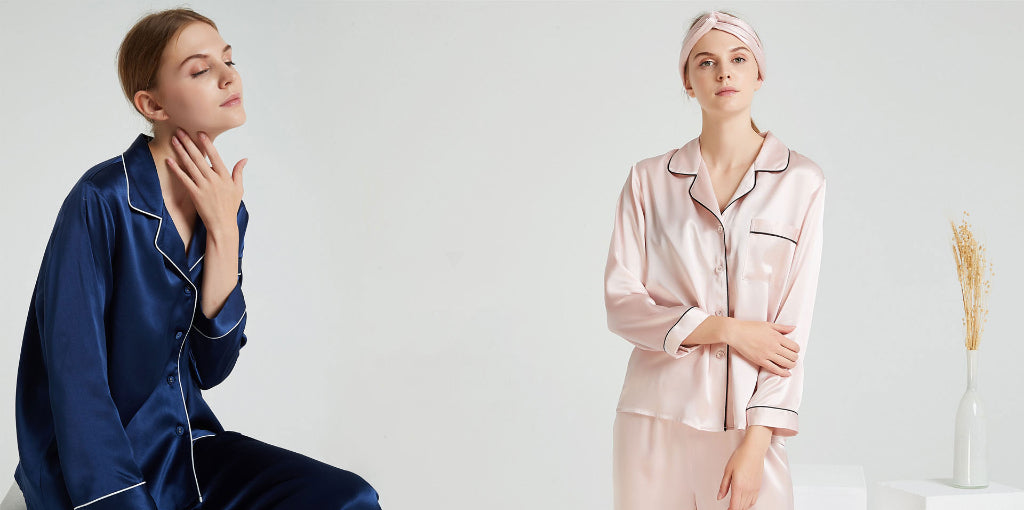
Fabrics to Avoid in Hot Weather
In the heat of summer, the wrong fabric choice can turn a pleasant day into a sweltering ordeal. Here's why you might want to skip denim and synthetic leather when the temperatures soar:
Denim: Denim, with its sturdy weave and classic appeal, is a staple in many wardrobes. However, its heavyweight and tightly woven construction make it less than ideal for hot weather. Denim's dense fabric structure traps heat close to the body, restricting airflow and leading to overheating. Additionally, the thick, stiff texture of denim can feel constricting and uncomfortable, especially when you're trying to stay cool.
Synthetic Leather: Synthetic leather, also known as faux leather or vegan leather, is a popular alternative to genuine leather. While it offers affordability and animal-friendliness, synthetic leather lacks the breathability of natural materials. In hot weather, synthetic leather can feel stifling and sweaty, as it doesn't allow for proper ventilation. This can leave you feeling uncomfortable and clammy, making it a less-than-ideal choice for summer attire.
When the summer heat is in full force, it's best to opt for lighter, more breathable fabrics like cotton, linen, or silk to stay feeling fresh and comfortable all day long.
Can You Wear Silk in Winter
While silk is often associated with warm weather, it also performs admirably in winter. Its natural insulating properties help retain body heat, keeping you cozy without feeling overheated. Silk base layers, scarves, and even bedding can provide much-needed warmth during the colder months without sacrificing breathability.
FAQs About The Breathability Of Silk
Q1: Is silk the most breathable fabric?
A1: Silk is one of the most breathable fabrics available, even more breathable than cotton, a popular choice for summer clothing. In a study comparing the breathability of different fabrics, silk was found to be 30% more breathable than cotton.
Q2: Why is silk so breathable?
A2: Silk's breathability stems from its unique fiber structure. The fibers of silk are very thin and smooth, with ample space between them, allowing air to flow freely. Additionally, silk fibers are less absorbent than cotton fibers, preventing moisture buildup and promoting a cooler, drier feel.
Q3: Can I wear silk in hot weather?
A3: Absolutely! Silk is an ideal fabric for hot weather clothing. Its exceptional breathability keeps you cool and comfortable, even on the hottest days. Silk's lightweight and soft nature further enhances its suitability for warm weather wear.
Q4: What are some other breathable fabrics besides silk?
A4: Aside from silk, other breathable fabrics well-suited for hot weather include:
- Cotton: A natural fiber known for its softness and absorbency, cotton allows air to circulate effectively, keeping you cool and dry.
- Linen: Derived from flax plants, linen is a lightweight, durable fabric with exceptional breathability. Its loose weave promotes airflow, making it ideal for warm weather wear.
- Bamboo: A sustainable and eco-friendly fabric, bamboo is highly breathable and moisture-wicking, keeping you cool and comfortable even in humid conditions.
Q5: How can I care for silk clothing to maintain their breathability?
A5: To preserve the breathability of your silk garments, follow these care guidelines:
- Hand wash or dry clean: Avoid harsh detergents and machine washing, which can damage the delicate silk fibers.
- Use mild soap: Opt for gentle, fragrance-free soaps specifically designed for silk.
- Air dry or tumble dry on low: Avoid high heat settings, as these can harm the silk fibers.
- Iron on low heat: If ironing is necessary, use a low heat setting and a pressing cloth to protect the fabric.
By following these care instructions, you can ensure that your silk garments maintain their breathability and comfort for years to come.

Conclusion
In the realm of fabrics, silk emerges as the unrivaled champion of breathability. Its natural properties allow for optimal airflow and moisture regulation, making it the perfect choice for staying cool and comfortable in any season.
Whether you're dressing for a scorching summer day or a balmy summer night, silk's luxurious feel and exceptional breathability make it the ultimate fabric for all your fashion and comfort needs.























